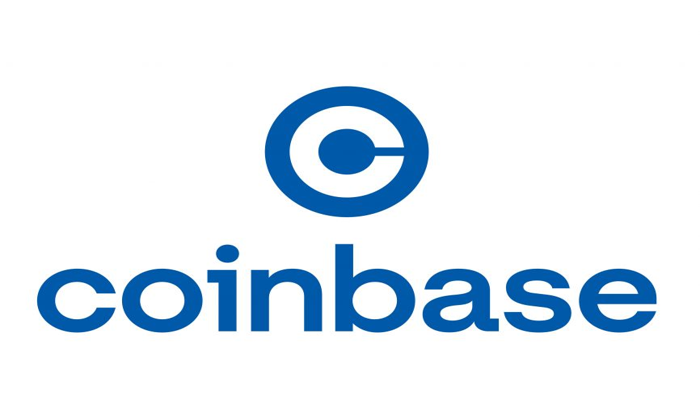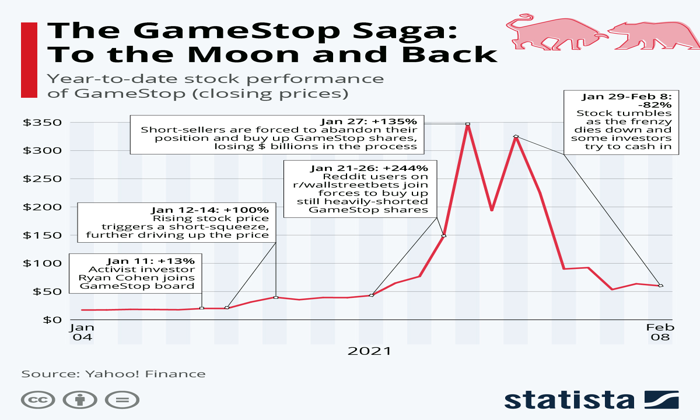Coinbase, a leading cryptocurrency exchange publicly traded under the ticker COIN on the Nasdaq, has recently caught the attention of analysts at Cantor Fitzgerald who have rated it as “Overweight” with a target price of $245. This endorsement comes amidst discussions about the significant impact of its partnership with Circle, particularly in the realm of stablecoin revenue, which is increasingly aligned with the Ethereum network. Market fluctuations have affected Coinbase stock, currently hovering around $150, down from its earlier highs due to external pressures like trade tensions. However, with the potential of stablecoin regulation on the horizon, there is speculation that Coinbase could significantly increase its revenue from the $60 billion USDC stablecoin, particularly if the market matures. As such, Coinbase is not just a cyclical trading platform, but a vital player in the evolving cryptocurrency economy.
As a prominent player in the digital currency landscape, Coinbase represents much more than a traditional trading venue for cryptocurrencies. Recently, analysts have begun to spotlight its role in the burgeoning field of stablecoins and how its collaboration with Circle could redefine its business model. With Coinbase’s strategic positioning within the Ethereum ecosystem, it stands to benefit immensely from the growing market for digital assets and the potential introduction of new regulations governing stablecoin operations. The changing dynamics within the crypto market suggest that Coinbase could transition from simply a trading platform to a cornerstone of infrastructure supporting cryptocurrency transactions. This evolution in its operational scope highlights Coinbase’s significant revenue potential, particularly through its affiliations with major stablecoin projects.
The Importance of Coinbase in the Cryptocurrency Exchange Market
Coinbase has solidified its position as one of the leading cryptocurrency exchanges in the world, trading under the ticker symbol COIN on Nasdaq. As a central hub for buying and selling cryptocurrencies, the platform plays a crucial role in shaping investor sentiment and market trends. With significant institutional partners and a robust infrastructure, Coinbase is not just a trading platform; it’s a driving force in the evolution of digital finance. Analysts from Cantor Fitzgerald recently emphasized that Coinbase’s partnership with Circle could redefine its market narrative, transitioning from a mere trading platform to an essential component of the cryptocurrency ecosystem.
The analysts believe that by aligning with Circle, Coinbase taps into the growing demand for stablecoins, particularly the USDC, which is closely tied to the Ethereum network. This partnership enhances Coinbase’s revenue streams and positions it well amid increasing regulatory scrutiny on stablecoins. The potential for Coinbase to capitalize on stablecoin revenue is substantial, especially as legislation on stablecoin use develops, potentially boosting the market to unprecedented sizes. The analysts project that as stablecoins gain traction, Coinbase’s influential role will only amplify, securing its relevance in the cryptocurrency exchange market.
Understanding Stablecoin Revenue and Its Impact on Coinbase
Stablecoins, particularly USDC, represent a significant aspect of Coinbase’s revenue portfolio. The recent disclosure revealed that Coinbase garners 50% of Circle’s stablecoin reserve revenue, emphasizing its strategic importance in the cryptocurrency landscape. Stablecoin revenue is not just a side note for Coinbase; it is increasingly becoming a major contributor to the company’s overall earnings. With the expanding use cases for stablecoins in transactions and decentralized finance, Coinbase stands to benefit immensely from this segment, particularly as more users flock to platforms offering these financial products.
As analysts suggest, if the US stablecoin market eclipses $2 trillion by 2035, Coinbase’s revenue sourced from stablecoins could potentially multiply by 5 to 10 times, contingent on broader economic conditions. This forecast aligns with Coinbase’s commitment to providing competitive returns on USDC held on its platform, thereby increasing user investment in stablecoins. Coinbase’s strategy enhances customer loyalty and transaction volume, fostering a growth loop that further stabilizes its financial outlook amid market fluctuations.
Circle IPO and Its Implications for Coinbase’s Growth
The impending IPO of Circle is creating ripples in the crypto finance space, particularly concerning Coinbase’s business model. With Circle disclosing that Coinbase receives substantial revenue from its USDC backbone, stakeholders are keenly observing how this relationship will evolve post-IPO. The potential of Circle going public could enhance transparency and operational clarity about revenue-sharing structures, ultimately benefiting Coinbase. A successful IPO would not only elevate Circle’s market presence but also provide Coinbase with more ammunition to attract investors looking to capitalize on the growing stablecoin market.
Moreover, with Circle positioned at the forefront of stablecoin innovation, Coinbase could leverage this relationship to expand its own offerings. The introduction of new features or services tied to Circle’s platform could drive user engagement, leading to increased transaction volumes and, consequently, higher revenue for Coinbase. Should Circle’s IPO be received positively, it might also inspire renewed investor interest in Coinbase, further driving its stock price up as market sentiment stabilizes.
Analyzing the Future of Coinbase’s Stock Performance
The performance of Coinbase’s stock (COIN) has seen significant volatility, especially in light of market-wide shifts spurred by geopolitical tensions and economic uncertainties. Analysts at Cantor Fitzgerald recently rated Coinbase with an ‘Overweight’ status, suggesting a bullish outlook with a price target of $245. However, as cryptocurrency prices fluctuate and market conditions remain tenuous, Coinbase’s stock has faced significant pullbacks, including a year-to-date decline of 38% as noted earlier this month.
For investors, understanding the aspects influencing the stock, such as stablecoin revenue and transactions on its layer-2 network, is key. As Coinbase continues to diversify its revenue streams and solidify its partnerships, particularly with Circle, the potential for recovery and growth remains optimistic. Investors should keep an eye on macroeconomic trends and regulatory developments surrounding cryptocurrencies, which could substantially impact Coinbase’s stock trajectory.
Base: Coinbase’s Innovative Layer-2 Solution
Coinbase’s layer-2 scaling solution, Base, has rapidly emerged as a popular platform for developers and users alike. In an era where network congestion on Ethereum can impede transaction speeds, Base offers a streamlined solution that enables faster and cheaper transactions. With 17 million active addresses reported in the last month, Base reflects a significant uptake among users, showcasing Coinbase’s ability to innovate within the competitive landscape of blockchain technology.
The seamless ability for Coinbase users to transition their funds onto Base encourages a flywheel effect, wherein increased user attraction drives the development of more applications. This growth not only enhances user experience but also contributes to an uptick in revenue through transaction fees. Coinbase’s role as a sequencer for the Base network ensures that transaction processing remains efficient, further solidifying its position as a critical infrastructure provider in the crypto ecosystem.
Regulatory Landscape and its Influence on Coinbase’s Operations
As Coinbase navigates the complex regulatory landscape surrounding cryptocurrencies, particularly stablecoins, the company’s alignment with legislation will be critical for its future growth. Proposed regulations on stablecoins could either solidify or constrain the operational capabilities of companies like Circle and, by extension, Coinbase. Analysts are optimistic that clear regulation will create a more stable environment for cryptocurrency exchanges, ensuring that players like Coinbase can effectively capitalise on the burgeoning stablecoin market.
Coinbase’s proactive engagement in conversations about regulatory changes serves as a blueprint for transparency in the crypto industry. By aligning with compliance measures, the firm not only protects its business interests but also fosters trust among its users. A clear regulatory framework could encourage more individuals and institutions to engage with Coinbase, potentially expanding user adoption and solidifying its market dominance even further.
The Role of Ethereum in Coinbase’s Business Model
Ethereum, being one of the most prominent blockchain networks, plays a pivotal role in Coinbase’s operations. The expansive ecosystem that Ethereum nurtures allows Coinbase to engage with a wide range of decentralized applications (dApps) and services, contributing significantly to its transaction volume and revenue. As more users seek to engage with Ethereum-based projects, Coinbase strategically positions itself to serve as a bridge, facilitating access to this thriving ecosystem.
As Ethereum continues to evolve with upgrades poised to enhance scalability and reduce transaction costs, Coinbase stands to benefit substantially. The integration of such features into Coinbase’s platform can attract new users and introduce innovative financial instruments, such as liquidity pools and decentralized finance (DeFi) protocols, further enhancing Coinbase’s appeal. Embracing Ethereum’s growth trajectory aligns with Coinbase’s goal of becoming a comprehensive financial service provider in the digital asset space.
Investment Insights: Coinbase Stock for the Future
For investors considering Coinbase stock, understanding its potential amidst shifting market conditions is vital. The current valuation may appear attractive, particularly given the overarching growth of the cryptocurrency sector. Experts suggest that as Coinbase continues to assert its dominance in stablecoins and layer-2 solutions, the stock’s value could recover and even surpass past highs once broader market sentiments improve. Analysts believe the embrace of innovative technologies and ongoing partnerships could provide a solid foundation for long-term growth.
Furthermore, tracking macroeconomic trends, industry innovations, and regulatory developments will enable investors to make informed decisions regarding Coinbase stock. With strong backing from analysts and a growing user base, Coinbase represents a notable opportunity for those looking to partake in the evolving digital finance landscape. In summary, while caution is warranted during volatile markets, the strategic initiatives at Coinbase signal potential for resiliency and future rebounds.
Frequently Asked Questions
What is Coinbase stock and how is it performing?
Coinbase stock, trading under the ticker COIN on the Nasdaq, has been experiencing fluctuations. As of recent reports, COIN is trading around $150, showing a decline of 12.5% over the past week amid broader market movements. Analysts from Cantor Fitzgerald have given an ‘Overweight’ rating with a price target of $245, suggesting a potential upside.
How does Coinbase generate revenue from stablecoin transactions?
Coinbase generates revenue through a commercial agreement with Circle, the issuer of the USDC stablecoin. They receive 50% of the revenue derived from the reserves backing USDC, which totaled $910 million in 2023. Additionally, Coinbase benefits from transaction fees paid by users on its platform, particularly through its layer-2 network called Base.
What is the significance of Coinbase’s partnership with Circle for stablecoin revenue?
The partnership between Coinbase and Circle is significant for stablecoin revenue as it allows Coinbase to tap into the growing USDC market. By receiving 50% of Circle’s residual revenue from the USDC reserves, Coinbase is positioned to increase its revenue as the demand for stablecoins rises, especially if stablecoin legislation becomes more favorable in the U.S.
How does Coinbase’s Base layer-2 network contribute to its overall performance?
Coinbase’s Base layer-2 network has gained traction with significant user activity, recording 17 million active addresses recently. This increased usage creates a flywheel effect, where more developers build applications, attracting more users and driving higher transaction fees, further enhancing Coinbase’s revenue potential.
What impact does the Ethereum network have on Coinbase’s services?
The Ethereum network is integral to Coinbase’s operations, especially for transactions processed through its layer-2 network, Base. Coinbase acts as a sequencer for Base, facilitating transaction ordering and bundling, which optimizes transaction efficiency and can lead to increased revenue through transaction fees.
What future projections do analysts have for Coinbase and its market position?
Analysts project that as the stablecoin market potentially exceeds $2 trillion by 2035, Coinbase could see its stablecoin revenue increase significantly, possibly by 5-10x. This projection is contingent on the growth of USDC usage on Coinbase’s platform and favorable market conditions for bonds.
How does Coinbase’s stock react to market events and trends?
Coinbase’s stock, COIN, has shown volatility in response to broader economic events, including political developments. For example, after significant political events, shares surged but have since experienced declines, indicating that external factors heavily influence its market performance.
What role does legislation play in the future of Coinbase and Circle?
Legislation surrounding stablecoins is crucial for companies like Circle and Coinbase. Potential favorable regulations being discussed in Congress could allow Circle to operate more freely across the U.S., impacting Coinbase’s revenue from stablecoin transactions positively.
| Key Points |
|---|
| Coinbase trades as COIN on the Nasdaq. |
| Cantor Fitzgerald analysts rate Coinbase as ‘Overweight’ with a price target of $245. |
| Current trading price for COIN is around $150, with recent declines due to market conditions. |
| Coinbase generates revenue from Circle’s USDC stablecoin reserves, taking a 50% share in residual payments. |
| Circle disclosed $910 million in revenue from stablecoin operations, with significant growth expected. |
| Stablecoin legislation could boost Coinbase’s market position in the U.S. over the long term. |
| Base launched in Q3 2023, attracting 17 million active addresses, significantly outpacing competitors. |
| Increased user activity on Base is expected to generate higher transaction revenue for Coinbase. |
Summary
Coinbase, a major player in the cryptocurrency market, continues to attract attention with its strategic partnerships and growth potential. Analysts suggest that Coinbase is not just a trading platform but a critical infrastructure provider for the crypto economy. As the stablecoin market evolves, particularly with USDC, Coinbase stands to significantly increase its revenue, positioning itself for long-term success. With continued innovations like Base and favorable regulatory developments, Coinbase is well-positioned for future growth.
Coinbase, a leading cryptocurrency exchange, is making waves on Wall Street with its stock trading symbol COIN. Recent coverage by Cantor Fitzgerald analysts has labeled it with an “Overweight” rating, predicting a price target of $245, which signifies growing optimism around its potential in the fintech landscape. The firm highlights Coinbase’s strategic partnership with Circle, particularly in generating stablecoin revenue linked to the Ethereum network, as pivotal to transforming the exchange’s market narrative. Despite recent fluctuations in the stock price, currently hovering around $150 amid broader market trends, the potential for Coinbase’s growth, fueled by a thriving stablecoin market, remains substantial. As more users embrace USDC and decentralized applications proliferate on its layer-2 network, the future looks bright for Coinbase and its ambitious aspirations in the crypto economy.
As one of the foremost players in the digital currency trading arena, Coinbase has proven to be a significant catalyst for innovation in the sector. The company is recognized not only for its extensive platform facilitating the trading of cryptocurrencies but also for its role as a pivotal infrastructure provider for technologies powered by stablecoins. Analysts have pointed out that Coinbase’s collaboration with Circle to leverage stablecoin revenue is an influential step towards establishing itself as a core building block within the decentralized finance landscape. Additionally, the exchange’s layer-2 effort, known as Base, is rapidly gaining traction among developers, enhancing its overall service and user engagement. This evolving narrative positions Coinbase as a foundational entity in the expanding realm of cryptocurrency applications and services.














